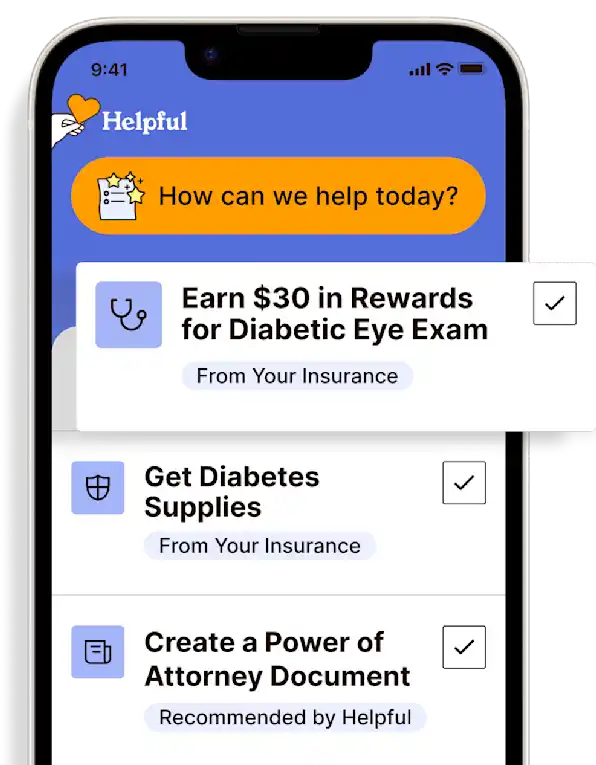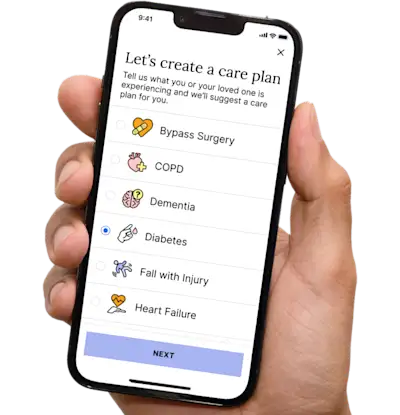Original Medicare (Parts A & B): Ambulance Services
Ambulance services can be either emergency medical (EMT) or non-emergency medical transport (NEMT).
Access all my benefitsGet insurance benefits, legal documents, and medical records in one place
How To Receive
Details on how to apply
EMT: In an emergency situation, call 9-1-1 and request an ambulance.
NEMT: Obtain a written order from a provider stating that non-emergency ambulance transport is medically necessary (Medicare will not pay without this).
Ambulance services have a non-emergency line to arrange for non-emergency transport. Call it to arrange NEMT.
Do not call 9-1-1 for non-emergency transport.
For more information on Medicare benefits and coverage, call 1-800-MEDICARE (1-800-633-4227) or visit the Medicare Benefits Website. TTY users, call 1-877-486-2048.
Get more support and guidance on insurance benefits, medical records and legal forms.
Helpful brings together your insurance benefits, legal documents, and medical records in one personalized place — so you always know what you have, and never have to search again.

For emergency situations, whether for accident/injury or serious illness, emergency medical services may be needed for hospital transport. A medical emergency occurs when a prudent layperson, with an average knowledge of health and medicine, believes that medical symptoms require immediate medical attention to prevent devastating illness, loss of life, loss of a limb, or loss of function of a limb. The medical symptoms may be significant illness, injury, severe pain (including any unexplained or uncontrolled chest pain), or a medical condition that is rapidly getting worse.
Covered ambulance services include fixed-wing (airplane), rotary-wing (helicopter), and ground (truck) ambulance services, to the nearest appropriate facility that can provide care. Emergency care is covered services that are rendered by a provider qualified to furnish emergency services and are needed to evaluate, treat, and/or stabilize an emergency medical condition.
Ambulance services are covered for those whose medical condition is such that other means of transportation could endanger the person’s health or is otherwise authorized by the plan. This is known as non-emergency medical transport (NEMT) and is only appropriate if it is documented that the member’s condition is such that other means of transportation could endanger the person’s health and that transportation by ambulance is medically required.
*Note that emergency medical services do not transport anywhere other than hospitals and, in some cases, freestanding emergency departments.
Also note that family is generally not permitted to accompany loved ones in an ambulance unless the transport is a minor (aged 17 or younger).
Technology for Health Tasks. Mental Health for the Tough Stuff.
Helpful connects your medical records, insurance, and caregiving tasks automatically. And when you need more than logistics, a therapist is here to guide you.
In-Network and Covered
For Individuals, Couples and Families
HIPAA Compliant, Data Stays Private


Healthcare Tasks Simplified

From syncing records to spotting drug interactions, Helpful does the heavy lifting, turning complex health info into clear tasks and showing you benefits you can actually use, giving you clarity and control over your care.

In-Network Mental Health

Our licensed therapists are here to support you and your loved ones through stress, burnout, and life’s hardest moments, with an inclusive, compassionate approach that works with most insurance plans.

Create Legal Documents

Plan ahead by creating will, trusts, advance directives and more, that ensure your wishes are honored in the event you can’t speak for yourself -with Helpful guiding you every step of the way.